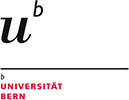Abstract
Asian hornets (Vespa velutina) are voracious predators of bees, and are the latest emerging threat to managed and wild pollinator populations in Europe.
To prevent establishment or reduce the rate of spread of V. velutina, early detection and destruction of nests is considered the only option. Detection is difficult as their nests are well hidden and flying hornets are difficult to follow over long distances.
We address this challenge by tracking individual V. velutina workers flying back to their nests using radio telemetry for the first time, finding five previously undiscovered nests, up to 1.33 km from hornet release points. Hornets can fly with 0.28 g tags if the tag:hornet ratio is less than 0.8. This method offers a step-change in options to tackle the spread of this invader, providing an efficient means of finding V. velutina nests in complex environments to manage this emerging threat to pollinators.
Kennedy et al. (2018) Searching for nests of the invasive Asian hornet (Vespa velutina) using radio-telemetry. Communications Biology.
https://www.nature.com/articles/s42003-018-0092-9









